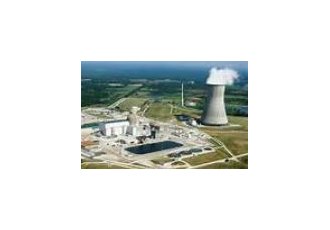
7 mai 2018
Lors d’examens de guides de procédures d’urgence une faille a été découverte. Elle interviendrait dans le cas de reprise de circulation naturelle avec une boucle de refroidissement stagnante suite à une rupture de canalisation doublée d’une perte d’alimentation électrique extérieure.
Pendant le cycle de refroidissement naturel par un générateur de vapeur défaillant isolé, la boucle pourrait atteindre des températures élevées. Le liquide passant en vapeur, le refroidissement ne pourra s’effectuer. Dans ces conditions le temps nécessaire au refroidissement serait trop long : les réserves des accumulateurs d’azote, associées aux décharges vapeur à l’atmosphère ainsi qu’aux vannes de régulation de débit de la pompe d’alimentation en eau auxiliaire entrainée par la turbine seraient toutes épuisées.
 Type : PWR - Puissance : 3 565 MWth - Première divergence : 10 / 1984 -
Type : PWR - Puissance : 3 565 MWth - Première divergence : 10 / 1984 -
Available in english only
Event Number : 53388
Facility : CALLAWAY - State : MO
Unit : [1] - RX Type : [1] W-4-LP
Event Date : 05/07/2018 - Event Time : 13:35 [CDT]
Emergency Class : NON EMERGENCY 10 CFR Section : 50.72(b)(3)(v)(A) - POT UNABLE TO SAFE SD 50.72(b)(3)(v)(B) - POT RHR INOP 50.72(b)(3)(v)(D) - ACCIDENT MITIGATION
Initial PWR : 100 % Current PWR : 100 %
Event Text
DISCOVERY OF A CONDITION THAT COULD HAVE PREVENTED FULFILLMENT OF A SAFETY FUNCTION
"On May 7, 2018, during an engineering review of mission time requirements for Technical Specification related equipment, a deficiency was discovered regarding the Emergency Operating Procedure (EOP) guidance for natural circulation cooldown with a stagnant loop. This condition could be the result of a postulated Main Steam Line Break with a loss of offsite power.
"During a natural circulation cooldown with a faulted steam generator, flow in the stagnant reactor coolant system (RCS) loop associated with the isolated faulted steam generator (SG) could stagnate and result in elevated temperatures in that loop. This becomes an issue when RCS depressurization to residual heat removal system (RHR) entry conditions is attempted. The liquid in the stagnant loop will flash to steam and prevent RCS depressurization. In this condition, the time required to complete the cooldown would be sufficiently long that the nitrogen accumulators associated with Callaway’s atmospheric steam dumps and turbine driven auxiliary feedwater pump flow control valves would be exhausted. The atmospheric steam dumps and turbine driven auxiliary feedwater pump would not be capable of performing their specified safety functions of cooling the plant to entry conditions for RHR operation. This issue has been analyzed by Westinghouse in WCAP-16632-P. This WCAP determined that to prevent loop stagnation, the RCS cooldown rate in these conditions should be limited to a rate dependent on the temperature differential present in the active loops.
"The WCAP analysis was used to support a revision to the generic Emergency Response Guideline (ERG) for ES-0.2 "Natural Circulation Cooldown." Figure 1 in ES-0.2 provides a curve of the maximum allowable cooldown rate as a function of active loop temperature differential which is directly proportional to the level of core decay heat. At the time of discovery of this condition, Callaway’s EOP structure did not ensure that the ES-0.2 guidance would be implemented for a natural circulation cooldown with a stagnant loop.
"Callaway has issued interim guidance to the on-shift personnel regarding this concern and is in the process of revising the applicable EOPs.
"This condition is reportable per 10 CFR 50.72(b)(3)(v) for any event or condition that at the time of discovery could have prevented the fulfillment of the safety function of structures or systems that are needed to (A) Shutdown the reactor and maintain it in a safe shutdown condition, (B) Remove residual heat, or (D) mitigate the consequences of an accident."
The licensee notified the NRC Resident Inspector of this condition.
https://www.nrc.gov/reading-rm/doc-collections/event-status/event/2018/20180507en.html